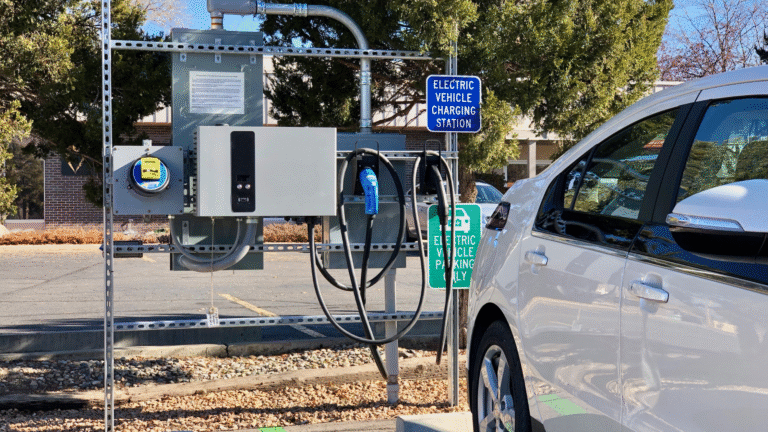As more electric vehicles hit Australia’s roads, an important question follows: what happens when they reach end-of-life? EV recycling isn’t just about disposing of cars — it’s about recovering valuable metals, managing hazardous materials safely, and building a circular industry that reduces the need for new mining. This article walks through the recycling process from decommissioning to material recovery, explains second-life uses, and outlines how the system is evolving in Australia.
Table of Contents
- Decommissioning and safe deactivation of EVs
- Second-life use: repurposing batteries for stationary storage
- Dismantling and parts recovery (what’s reusable)
- Battery recycling processes: mechanical, hydrometallurgical and pyrometallurgical routes
- Environmental and regulatory safeguards
- The economics and the Australian recycling landscape
- What consumers should know when disposing of an EV
- FAQs
- Conclusion
1. Decommissioning and safe deactivation of EVs
End-of-life handling begins with safe deactivation. Technicians isolate high-voltage circuits, discharge capacitors, and render the pack safe for transport and dismantling. This step is critical: batteries store dangerous energy, and improper handling risks fire or electric shock.
2. Second-life use: repurposing batteries for stationary storage
Before recycling, many packs are assessed for second-life viability. Even with reduced capacity, battery packs can be valuable in:
- Grid peak-shaving or frequency management
- Commercial energy storage for businesses
- Community microgrids or backup power
Repurposing delays recycling, provides economic value, and reduces the need for new battery materials. Testing protocols determine which packs are fit for second-life and which must go directly to recycling.
3. Dismantling and parts recovery (what’s reusable)
EVs have many components that outlive the battery:
- Electric motors and inverters: often reused or remanufactured.
- Thermal systems, wiring harnesses and chargers: salvageable if undamaged.
- High-value electronics and rare materials: can be reclaimed and refurbished.
- Interior parts and body panels: follow standard auto recycling streams.
Dismantlers separate these items for refurbishment, resale or material recovery — maximising reuse before raw-material recycling.
4. Battery recycling processes: mechanical, hydrometallurgical and pyrometallurgical routes
There are three main recycling approaches:
Mechanical (shredding + sorting)
Packs are mechanically shredded and sorted to separate metals, plastics and black mass (a mixture of electrode materials). Black mass is an intermediate product for further refining.
Hydrometallurgical (chemical leaching)
Black mass is treated with chemical solutions to dissolve valuable metals (lithium, cobalt, nickel). Metals are precipitated and purified to battery-grade salts. This route can achieve high recovery rates and lower emissions than high-temperature methods.
Pyrometallurgical (smelting)
High-temperature smelting recovers metals like nickel, cobalt and copper. It’s robust for mixed feedstocks but can lose lithium and requires more energy.
Hybrid approaches combine processes to maximise yield. The chosen method depends on feedstock, scale and environmental considerations.
5. Environmental and regulatory safeguards
Safe recycling must manage:
- Hazardous electrolyte and flammable materials — drained and neutralised.
- Air emissions from thermal processes — controlled with scrubbers and filters.
- Wastewater and chemical residues — treated to regulatory standards.
- Worker safety — HV procedures, PPE and training are essential.
Strong regulation and certification regimes ensure recyclers meet environmental and safety obligations.
6. The economics and the Australian recycling landscape
Recovered metals have value, but economics depend on scale, metal prices and processing costs. Australia’s supply of end-of-life batteries is growing, which makes domestic recycling increasingly viable. Local recycling reduces transport costs, captures more value domestically, and supports a circular battery industry that can feed local battery manufacturing and reduce reliance on imported materials.
7. What consumers should know when disposing of an EV
- Don’t attempt DIY removal of battery packs. Always use certified recyclers or authorised dealers.
- Check for “take-back” programs from manufacturers or retailers; many offer collection and recycling services.
- Consider second-life pathways — if your pack still has useful capacity, it may fetch a better value for repurposing.
- Retain documentation about battery history and capacity — it helps recycling and second-life valuations.
FAQs
Q: Are EV batteries landfill-bound?
A: Not if handled correctly. Best practice is deactivation and then reuse or recycling; landfill should be a last resort.
Q: How much of a battery can be recovered?
A: Modern processes recover high percentages of nickel and cobalt; lithium and graphite recovery rates are improving with hydrometallurgy and refinement.
Q: Is recycling energy-intensive?
A: Some processes (smelting) use significant energy; newer chemical (hydrometallurgical) and mechanical processes aim for lower energy use and better yields.
Conclusion
End-of-life for EVs is not the end of value — it’s a transition into reuse and material recovery. Safe deactivation, second-life applications, careful dismantling and modern recycling techniques capture metals and components, reduce environmental impacts and support a circular battery economy. For Australia, building domestic recycling capacity is a strategic priority: it creates jobs, retains material value and makes EV adoption more sustainable in the long run.
Meta description: Discover how old EVs are handled — from safe deactivation and second-life battery use to shredding and metal recovery — and why recycling matters for Australia’s EV future.
